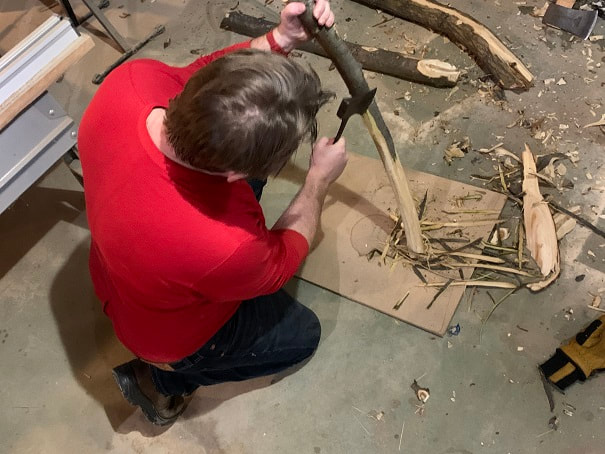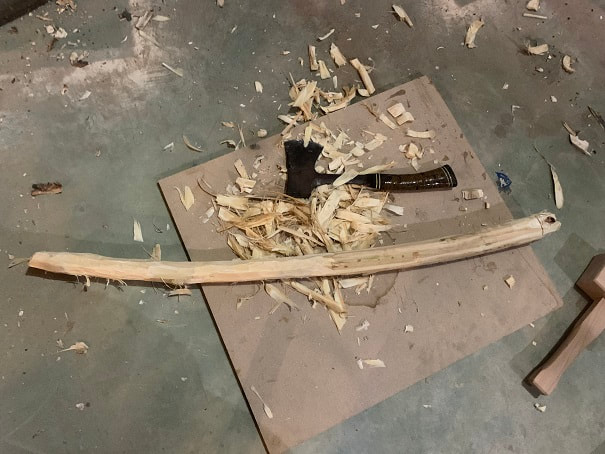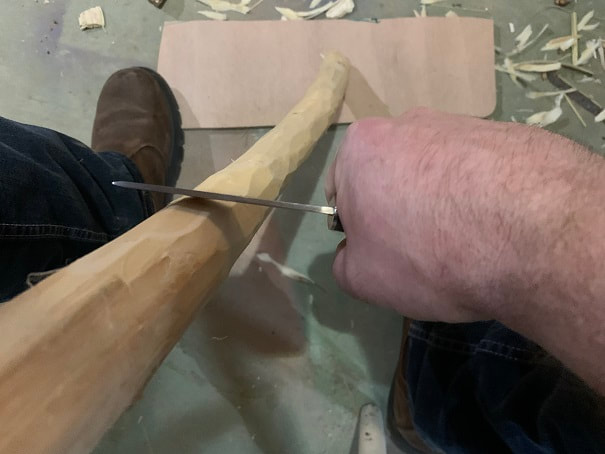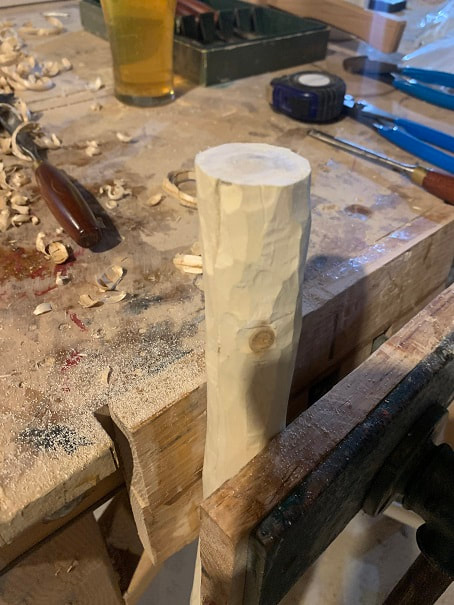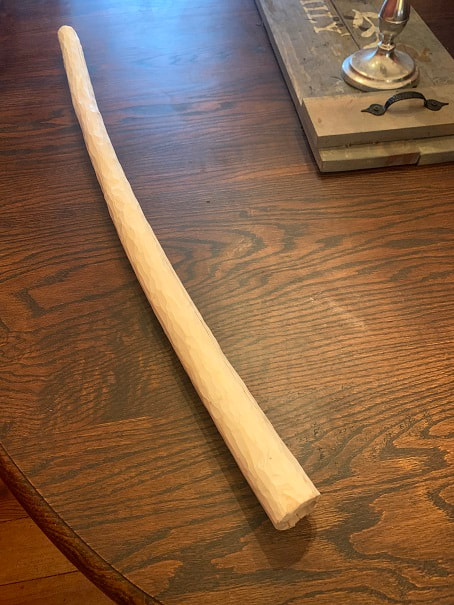above: Feb 2021: Chopping down a Willow limb from which I will make two traditional Viking Lurs
The Lur was the battle horn of the Vikings; first mentioned in the Icelandic Viking Sagas. Here I will detail the design and construction methods I used to make two Lurs.
First some background information, then I will get to Lur making. In the Bronze Age around 1000BC, curved metal horns/instruments called Lurs were made and used in Denmark and elsewhere in that region; this was long before the age of the Vikings. Fast forward to the age of Vikings (around 800AD), and Lurs had evolved (or devolved) into straight wooden horns. Here I will concern myself with the version of the Lur that was a Viking instrument made from a Willow tree. They have been found in Viking burial ships from 800AD (Oseburg Lur, Norway) along with other times, and were possessions of Viking warriors told of in the Icelandic Sagas. From the sagas: “The warriors were summoned to battle with the Lur”! Lurs have been found from 30" (78cm) long to 42" (107cm) long and were about 2.75" (7cm) diameter at the bell end. They were frequently held together by 5 rings of willow wrapping. The wood was split in half, the inside hollowed out to form a tube, and the halves were put back together to make a solid tube. There is not a mouthpiece, the small end of the Lur itself is the mouthpiece. Later, Lurs continued in use by farmers and shepherds in Scandanavia, and these were made from birch and wrapped in birch, but are not to be confused with the earlier Viking Lurs.
Making a Viking Lur with Hand Tools
I'm not sure which tools Vikings had available to them, but I will make this Lur without any electricity. I will use an axe to gather the wood from a Willow tree and will use: Axe, hatchets, shave, saws, and chisels to make this Lur.

Now the wood needs to dry for at least 2 months. The internal moisture will exit the ends of the wood much faster than the sides and this will shrink the ends quicker and result in significant cracks at the ends. To prevent excessive moisture release from the ends, I dipped them in beeswax. I make beeswax candles, so I just dipped the ends of the wood in the wax a couple times.

On the right you can see one half of the Lur gouged out by hand with a gouge chisel. I decided to taper the inner bore from the mouthpiece end out to the bell end. At the Bell end the wall thickness is about 3/16". I sketched out the mirror image on the half on the left and I will carve that one out next.
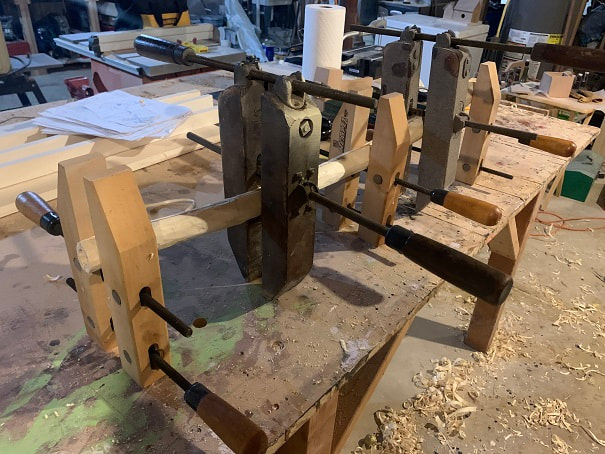
Gluing the two halves together. I'm keeping this Lur as authentic as possible, but I don't know what the vikings used for glue and I don't know what clamping mechanisms they had, though I doubt they had screw-clamps. One could lay the Lur on the ground and then lay heavy logs on the top to hold the pieces together. Anyway, I used Titebond III glue and clamps at this step.
Sound of a 34" Willow Viking Lur:




